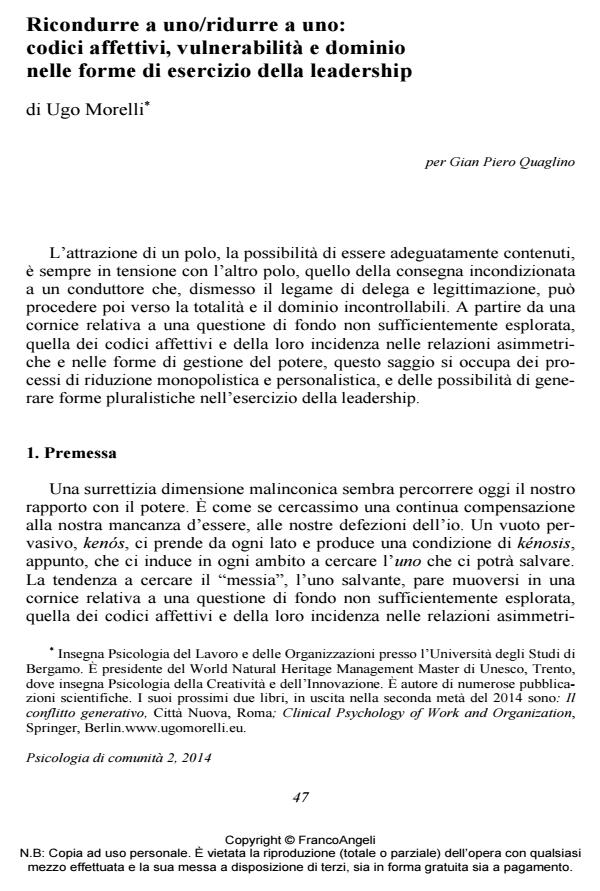Lead back to one/reduce to one: affective codes, vulnerability and dominance in the exercise of leadership
Journal title PSICOLOGIA DI COMUNITA’
Author/s Ugo Morelli
Publishing Year 2015 Issue 2014/2
Language Italian Pages 12 P. 47-58 File size 50 KB
DOI 10.3280/PSC2014-002004
DOI is like a bar code for intellectual property: to have more infomation
click here
Below, you can see the article first page
If you want to buy this article in PDF format, you can do it, following the instructions to buy download credits

FrancoAngeli is member of Publishers International Linking Association, Inc (PILA), a not-for-profit association which run the CrossRef service enabling links to and from online scholarly content.
The nature of the requisite authority is ambiguous and entails the need for autonomy and dependence of the individuals. The styles and the expression of leadership emerge from the psychodynamic processes between autonomy and dependence. The attraction of one pole, namely the possibility to be properly contained, is always in tension with the other pole, the unconditional surrender to a conductor who, dismissing the binding of delegation and legitimacy, can then proceed to an uncontrollable domination. In this paper the processes of moralistic and personalistic reduction and the ability to generate plural forms in the exercise of leadership will be addressed.
Keywords: Ambiguity, power, relation, conformity, affective codes, desire.
Ugo Morelli, Ricondurre a uno/ridurre a uno: codici affettivi, vulnerabilità e dominio nelle forme di esercizio della leadership in "PSICOLOGIA DI COMUNITA’" 2/2014, pp 47-58, DOI: 10.3280/PSC2014-002004